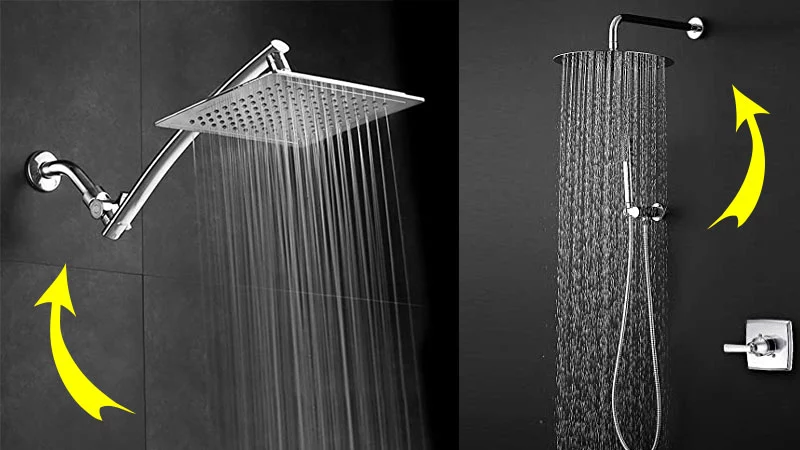Most pre-installed Shower rain head is set up to face the wall, but have you ever stopped to wonder why that is? Your shower head’s position can really impact your experience, so it helps to know why wall-facing showers are the norm.
Shower heads usually face opposite the wall to contain the water spray inside the stall instead of letting it leak into the rest of your bathroom.
However, it’s best that your Shower wand faces the nearer wall in rectangular bathrooms, and aiming it downwards at an angle is also a suitable alternative.
Here are 3 Reasons why your shower head is pointed at the wall:
We’ve told you the basic premise behind why Shower cascade often face the wall, but check out our more detailed explanations so you can get a balanced understanding:
- It keeps the water under control by aiming it away from openings such as shower doors. Your Shower nozzle likely offers a lot of water pressure which can make a huge mess if the spray hits spaces between glass panels in your shower enclosure.
- It lets you aim the water spray away from your body while you purge cold water from the pipes with hot water without soaking the outside bathroom area.
- It’s suitable for all kinds of shower area types such as glass enclosures, bathtubs and walk-in showers.

How high should a shower head be on the wall?
Most Shower jets are installed 6 and ¾ feet, or 80 inches, off the ground. Some shower heads are installed up to 7 feet, or 84 inches, above the bathroom floor. Others can be as low as 6 feet, or 72 inches.
The most important factor in deciding how high your shower head will be is your own height.
Shorter individuals may find 84 inches too high, so opt for a height in the 72-84 inch range that suits you.
Also Read: How High Should a Rain Shower Head Be?
How do you stick a shower head to the wall?
You will need a couple of supplies to attach your Shower spray to the wall, including a pipe wrench and some Teflon tape.
When you replace an old shower head, make sure you actively turn off the water supply beforehand to prevent water from drenching you.
Wrap your shower arm in Teflon tape, then place the rubber washer on it. Screw the Shower cap on in a clockwise motion. Take care not to do it too fast and try to avoid tightening it too much. Both these mistakes might break the Teflon tape, and you would have to repeat the entire process if that happens.
To watch this complete process, check out this great video from StarrTile!
How far should the shower head be from the wall?
If you’re installing a fixed shower spout it helps to know how far it should be from the wall. Shower arms come in varying lengths, but the most optimal distance is around four inches.
Your Shower wand should be about four inches from the wall to maximize spray coverage. This position strikes the perfect balance, minimizing splashing while allowing you ample space to move around in your shower enclosure.
Centering your shower rose becomes even more crucial. Ensure that you maintain the right distance to position it precisely at the center of the wall where you install it.
Does it matter which end of the shower arm goes into the wall?
While it’s easy enough to figure out how to install a Shower fixture, shower arms can be a bit trickier. Considering both ends of the shower arm insert into the wall is a mistake, as each end has a specific purpose.
The inlet of your shower arm is longer than the outlet, so you should make sure you put the right end into the wall.
The outlet may be too short, causing leaks and seepage, and unable to support the weight of your shower head.
Can you move the shower heads to the opposite wall?
It might take you a while before you come across your ideal shower position. Experimenting with different settings can help, but you should be careful not to break a couple of rules.
You can move your showerhead to the opposite wall as long as you have a water supply line in that wall.
Final Thoughts!
Shower head placement is a delicate art, but with the right facts, you can get it down pat. Pointing your shower emitter at the wall ensures optimal drainage, spray coverage, and a spacious showering experience. Just make sure you install it at the right height, and center it too!
Pingback: 1.8 GPM Showerheads: 8 Best Affordable to High-End Options